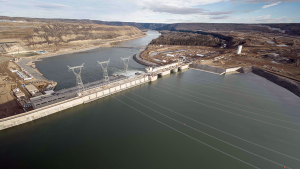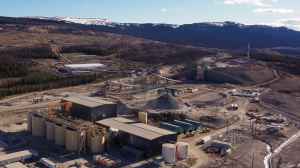In British Columbia, WorkSafeBC (the operating name of The Workers’ Compensation Board of British Columbia) refers some injured workers to its Vocational Rehabilitation Services team.
Vocational Rehab (VR) supports workers who can return to work, but, due to severe or complex injuries, are unable to return to their pre-incident jobs.
The team also helps injured workers return to work, either in a modified role or in a new line of work.
VR has had many successes, such as three examples from the files of WorkSafeBC (WSBC):
A pipe layer broke their left foot, resulting in chronic ankle pain.
After passing an assessment for heavy equipment operator, the worker took part in a rehab plan to prepare them for their new job.
The plan included weeks of occupational training, Class 1 driver training and job search allowance. The worker found a job as heavy equipment operator just a few weeks after their training was completed.
2) After injuring their shoulder and consulting with the VR team, a heavy equipment operator decided to become a property manager. The worker received weeks of formal training to take a licensing program at a BC post-secondary institution and found a job as a junior property manager after a four-week job search.
3) A bricklayer/concrete mason sustained a permanent back injury. Because the worker was also an experienced self-employed contractor, their rehab plan prepared them for work as a construction coordinator/estimator. The plan required many weeks of formal training in two certificate programs at a BC post-secondary institution. After successfully completing the formal training and a few weeks of job search, the worker found a position as a construction estimator through a training-on-the job agreement, whereby WSBC temporarily subsidizes a portion of the worker’s wages.
Sometimes, however, a WSBC claim doesn’t always go smoothly.
In that case, says Merrill O’Donnell of the BC Building Trades Council, a workers’ advocate can help.
Advocates help injured workers with their claims in many ways.
“For example, we can instruct them on how best to make an effective workplace incident claim application so it’s accepted,” said O’Donnell, who is the workers’ advocate for BC Building Trades. “This is particularly important in cases involving long-time occupational exposures where the gathering and presenting of the evidence is important.”
Most of the workers O’Donnell represents have filed a claim with the WCB and, for one reason or another, have been denied.
“So, they seek assistance from a workers’ advocate who knows the ins and outs of filing and/or appealing a denied claim,” he said.
In the case of an active (“alive”) claim, the advocate monitors developments and when things start to go sideways, they intervene.
The intervention can take the form of, first, what O’Donnell calls gentle persuasion.
If sweet talk doesn’t work, the advocate can appeal and counter-appeal to the WCB’s Review Division, and finally, if necessary, to the Workers’ Compensation Appeal Tribunal.
O’Donnell says there are many workers’ advocates in every province and territory in Canada.
“Some work for unions, some work privately, some are lawyers or have legal training and some learn the craft by jumping in with both feet,” he said.
In addition, some workers’ advocates work for the Workers’ Advisers Office in the BC Ministry of Labour (the same Ministry also has an Employers’ Advisers Office).
O’Donnell says the VR process is good, but less than perfect.
On the good side, he cites the following:
Training is provided to workers who cannot return to their pre-injury jobs;
Wage loss benefits and job search allowances granted during the VR planning and execution phase provide financial support to workers, enabling them to get back on their feet;
VR consultants provide research and analysis capacity to help workers find a new career; and
WCB facilitates training on the job and work assessments which allow potential employers to try out an injured worker for a possible permanent position.
But, on the other hand, O’Donnell says the VR process has a number of what he considers to be defects, including:
Temporary vocational benefits and job search allowances always come to an end, whether or not a worker has been able to find work; and
WCB cannot determine the success or failure of its VR plans, because it does not track workers the moment, they exit the system, which is their last day on job-search allowance.
O’Donnell says the “why” and “how” of what needs to be fixed in the VR process are “self-evident.”











Recent Comments
comments for this post are closed